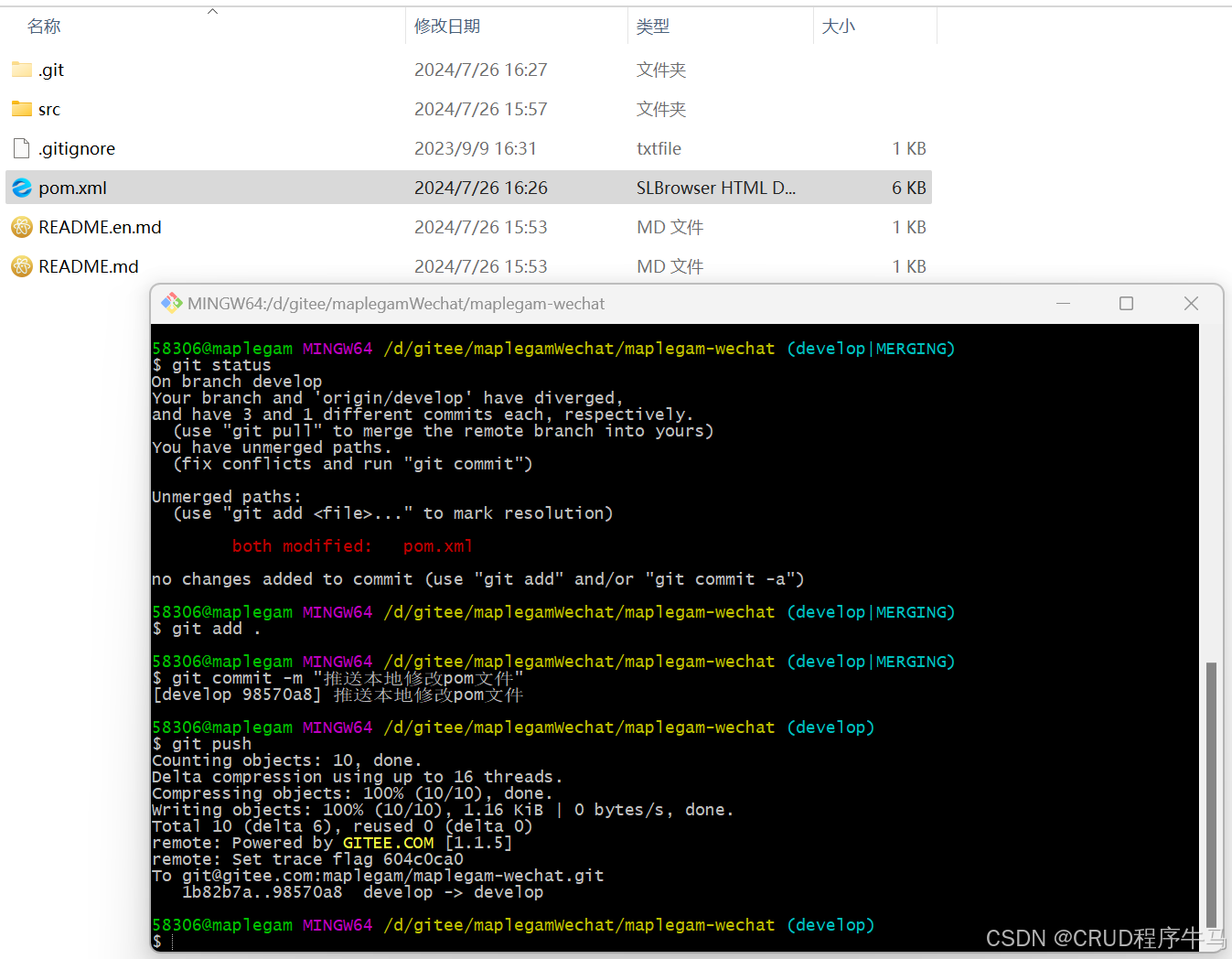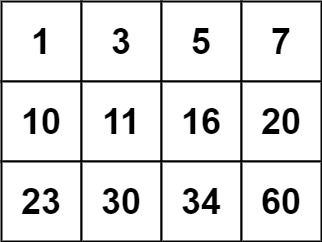目录
Spring Boot的Web开发
1.静态资源映射规则
第一种静态资源映射规则
2.enjoy模板引擎
3.springMVC
3.1请求处理
@RequestMapping
@DeleteMapping 删除
@PutMapping 修改
@GetMapping 查询
@PostMapping 新增
3.2参数绑定
一.支持数据类型:
3.3常用注解
一.@RequestParam
二.@RequestBody
三.@PathVaribale
四.@RequestHeader
五.@CookieValue
3.4数据传递
3.5文件上传
4.注册Servlet三大组件 Servlet/Filter/Listener
5.切换为其他嵌入式Servlet容器
6.restFul
Spring Boot的Web开发
1.静态资源映射规则
第一种静态资源映射规则
总结:
只要静态资源放在类路径下: called /static (or INF/resources
访问 : 当前项目根路径/ + 静态资源名
静态资源访问前缀 spring: mvc: static-path-pattern: /apesource/**
2.enjoy模板引擎
1.将页面保存在templates目录下

2.添加坐标
<dependency>
<groupId>com.jfinal</groupId>
<artifactId>enjoy</artifactId>
<version>5.0.3</version>
</dependency>3.开启配置(创建配置类)
@Configuration
public class SpringBootConfig {
@Bean(name = "jfinalViewResolver")
public JFinalViewResolver getJFinalViewResolver() {
// 创建用于整合 spring boot 的 ViewResolver 扩展对象
JFinalViewResolver jfr = new JFinalViewResolver();
// 对 spring boot 进行配置
jfr.setSuffix(".html");
jfr.setContentType("text/html;charset=UTF-8");
jfr.setOrder(0);
// 设置在模板中可通过 #(session.value) 访问 session 中的数据
jfr.setSessionInView(true);
// 获取 engine 对象,对 enjoy 模板引擎进行配置,配置方式与前面章节完全一样
Engine engine = JFinalViewResolver.engine;
// 热加载配置能对后续配置产生影响,需要放在最前面
engine.setDevMode(true);
// 使用 ClassPathSourceFactory 从 class path 与 jar 包中加载模板文件
engine.setToClassPathSourceFactory();
// 在使用 ClassPathSourceFactory 时要使用 setBaseTemplatePath
// 代替 jfr.setPrefix("/view/")
engine.setBaseTemplatePath("/templates/");
// 更多配置与前面章节完全一样
// engine.addDirective(...)
// engine.addSharedMethod(...);
return jfr;
}
}4.编写代码
@Controller
@RequestMapping("user")
public class RequestController {
@RequestMapping("/wwt")
public String successFound(){
return "success";
}
}3.springMVC
3.1请求处理
@RequestMapping
意义:处理用户的请求,相似于doget与dopost
位置: 类上:一级目录 方法:二级目录 例如:user/save user/delete student/save student/delete 属性: value = "",path = "" 表示请求路径
method=常量,此请求的类型(get,post),若不设置则此请求适配所有的请求方式
params = "" 限制请求参数,例如:params={"msg1","msg2"}表示请求路径中必须携带参数名为msg1与msg2的参数
注意:1.超链接默认发送的是get请求 2.所有请求所携带的参数格式均为:key = value
@DeleteMapping 删除
@PutMapping 修改
@GetMapping 查询
@PostMapping 新增
作用与@RequestMapping一样,只是请求方式不同,语法相同。
@RequestMapping可以点击查看源码 @Target({ElementType.METHOD, ElementType.TYPE}) METHOD==代表修饰方法,TYPE==代表修饰类
3.2参数绑定
绑定的机制:SpringMVC 绑定请求参数的过程是通过把表单提交请求参数,作为控制器中方法参数进行绑定的
一.支持数据类型:
1.基本类型参数:
包括基本类型和 String 类型
1.发送请求中携带数据的key与方法参数的name必须一致 2.数据类型合法
@RequestMapping("/show1")
public String one(String msg1){
System.out.println("msg1="+msg1);
return "success";
}2.POJO类型参数: 包括实体类,以及关联的实体类
@RequestMapping("/show3")
public String sendEmp(Emp emp){ //发送请求中携带数据的key与实体类的属性名必须一致
System.out.println(emp);
return "success";
}嵌套实体类:
@RequestMapping("/show3")
public String sendEmp(Emp emp){ //发送请求中携带数据的key与实体类的属性名必须一致
System.out.println(emp);
return "success";
} <!--被嵌套的实体类对象的name使用: 对象名.属性名 的方式 该属性名与发送请求中携带数据key必须一致-->
<form action="/one/show4" method="post">
员工编号:<input type="text" name="eid"><br/>
员工姓名:<input type="text" name="ename"><br/>
员工性别:<input type="text" name="esex"><br/>
部门编号:<input type="text" name="dept.did"><br/>
部门名称:<input type="text" name="dept.dname"><br/>
<input type="submit" value="发送请求">
</form>3.数组和集合类型参数: 包括 List 结构和 Map 结构的集合(包括数组)
@RequestMapping("/show5")
public String sendMap(@RequestParam Map map){//参数类型Map前需要添加@RequestParam注解
System.out.println(map);
return "success";
}<form action="/one/show6" method="post">
部门编号:<input type="text" name="did"><br/>
部门名称:<input type="text" name="dname"><br/>
员工编号1:<input type="text" name="emps[0].eid"><br/>
员工姓名1:<input type="text" name="emps[0].ename"><br/>
员工性别1:<input type="text" name="emps[0].esex"><br/>
员工编号3:<input type="text" name="empMap['one'].eid"><br/>
员工姓名3:<input type="text" name="empMap['one'].ename"><br/>
员工性别3:<input type="text" name="empMap['one'].esex"><br/>
<input type="submit" value="提交">
<a href="/one/show7?nums=1233&nums=234&nums=23432">发送请求7</a>
<h3>使用 ServletAPI 对象作为方法参数</h3>
<a href="/one/show7">发送请求8</a>
</form>4.使用 ServletAPI 对象作为方法参数 HttpServletRequest HttpServletResponse HttpSession java.security.Principal Locale InputStream OutputStream Reader Writer
@RequestMapping("/show8")
public String show7(HttpServletRequest request, HttpServletResponse response){
// request.setCharacterEncoding("UTF-8");
// response.setCharacterEncoding("UTF-8");
System.out.println(request);
System.out.println(response);
request.getParameter("msg1");
HttpSession session = request.getSession();
System.out.println(session);
session.setAttribute("","");
try {
response.sendRedirect("重定向");
} catch (IOException e) {
e.printStackTrace();
}
ServletContext applaction = session.getServletContext();
return "success";
}二.使用要求 1.发送请求中携带数据的key与方法参数的name必须一致 2.数据类型合法
3.3常用注解
springMVC常用注解
一.@RequestParam
作用: 把请求中指定名称的参数给控制器中的形参赋值。 如果页面标签名称和方法参数名称不一致,可以使用此注解实现 属性: name属性:设置参数名称 defaultValue属性:设置默认值 required属性:设置是否为必传
@RequestMapping("show1")
public String show1(@RequestParam(value = "msg") String msg1){
System.out.println("msg1="+msg1);
return "success";
}
@RequestMapping("/show2")
public String show2(@RequestParam("msg") String msg1,@RequestParam("msg2") String msg2){
System.out.println("msg1="+msg1+"msg2="+msg2);
return "success";
}二.@RequestBody
作用: 用于获取"请求体"内容。直接使用得到是 key=value&key=value... 结构的数据,并可以转换为对象 属性: required:是否必须有请求体。默认值是:true。
@RequestMapping("/show3")
public String show3(@RequestBody Emp emp){
System.out.println(emp);
return "success";
}三.@PathVaribale
作用: 用于绑定 url 中的占位符。例如:请求 url 中 /delete/{id}, 这个{id}就是 url 占位符。url 支持占位符是 spring3.0 之 后加入的。是 springmvc 支持 rest 风格 URL 的一个重要标志 属性: value:用于指定 url 中占位符名称。 required:是否必须提供占位符。
Restful是一种软件架构风格、设计风格,而不是标准,只是提供了一组设计原则和约束条件。 主要用于客户端和服务器交互类的软件,基于这个风格设计的软件可以更简洁,更有层次, 更易于实现缓存机制等。
Restful风格的请求是使用“url+请求方式”表示一次请求目的的,HTTP 协议里面四个表示操作方式的动词如下: GET:用于获取资源 POST:用于新建资源 PUT:用于更新资源 DELETE:用于删除资源 例如: /users/1 GET : 得到 id = 1 的 user /users/1 DELETE: 删除 id = 1 的 user /users/1/新名/新性 PUT: 更新 id = 1 的 user /users/新名/新性 POST: 新增 user
@RequestMapping("/show4/{ename}/{eid}")
public String show4(@PathVariable String ename,@PathVariable String eid){
System.out.println(ename+"ename"+eid+"eid");
return "success";
}
@RequestMapping("/show5/{name}/{id}")
public String show5(@PathVariable(value = "name") String ename,@PathVariable(value = "id") int eid){
System.out.println(ename+"ename"+eid+"eid");
return "success";
}四.@RequestHeader
作用: 用于获取请求消息头。
属性: value:提供消息头名称 required:是否必须有此消息头
@RequestMapping("/show1")
public String show1(@RequestHeader(value = "name")String name){
System.out.println(name);
return "success";
}五.@CookieValue
作用: 用于把指定 cookie 名称的值传入控制器方法参数。
属性: value:指定 cookie 的名称。 required:是否必须有此 cookie。
@RequestMapping("/show2")
public String show2(@CookieValue(value = "JSESSIONID",required = false)String id){
System.out.println(id);
return "success";
}3.4数据传递
controller的返回值类型有两种,Json和String
String类型返回值作用:
-
充当视图的逻辑名称,默认页面跳转为请求转发方式
@RequestMapping("/show01")
public String show01(){
System.out.println("成功响应show01");
return "success";
}2. 充当一次请求转发或重定向(发送请求)
@RequestMapping("/show02")
public String show02(){
System.out.println("成功响应show02");
return "redirect:show01";
}
@RequestMapping("/show03")
public String show03(){
System.out.println("成功响应show03");
return "forward:show01";
}3. 给session中存数据并返回前端
@RequestMapping("/show04")
public String show04(HttpServletRequest request){
System.out.println("成功响应show04");
Emp emp = new Emp(11,"wwt","男");
request.getSession().setAttribute("emp",emp);
return "success";
}Json类型返回值作用:
将对象转换为json格式返回给前端:
@RequestMapping("/show02")
@ResponseBody
public List<Emp> shoe02(){
Emp emp1 = new Emp(12,"wwt","男");
Emp emp2 = new Emp(13,"wwt","男");
Emp emp3 = new Emp(14,"wwt","男");
List<Emp> list = new ArrayList<>();
list.add(emp1);
list.add(emp2);
list.add(emp3);
return list;
}3.5文件上传
该案例以七牛云为例:
-
在springboot项目中导入七牛云需要坐标
<!--导入七牛云需要坐标-->
<dependency>
<groupId>com.qiniu</groupId>
<artifactId>qiniu-java-sdk</artifactId>
<version>7.2.25</version>
</dependency>
<dependency>
<groupId>com.squareup.okhttp3</groupId>
<artifactId>okhttp</artifactId>
<version>3.14.2</version>
<scope>compile</scope>
</dependency>
<dependency>
<groupId>com.google.code.gson</groupId>
<artifactId>gson</artifactId>
<version>2.8.5</version>
<scope>compile</scope>
</dependency>
<dependency>
<groupId>com.qiniu</groupId>
<artifactId>happy-dns-java</artifactId>
<version>0.1.6</version>
<scope>test</scope>
</dependency>2.配置七牛云相关信息:
@Configuration
public class SpringBootConfig {
@Bean(name = "jfinalViewResolver")
public JFinalViewResolver getJFinalViewResolver() {
// 创建用于整合 spring boot 的 ViewResolver 扩展对象
JFinalViewResolver jfr = new JFinalViewResolver();
// 对 spring boot 进行配置
jfr.setSuffix(".html");
jfr.setContentType("text/html;charset=UTF-8");
jfr.setOrder(0);
// 设置在模板中可通过 #(session.value) 访问 session 中的数据
jfr.setSessionInView(true);
// 获取 engine 对象,对 enjoy 模板引擎进行配置,配置方式与前面章节完全一样
Engine engine = JFinalViewResolver.engine;
// 热加载配置能对后续配置产生影响,需要放在最前面
engine.setDevMode(true);
// 使用 ClassPathSourceFactory 从 class path 与 jar 包中加载模板文件
engine.setToClassPathSourceFactory();
// 在使用 ClassPathSourceFactory 时要使用 setBaseTemplatePath
// 代替 jfr.setPrefix("/view/")
engine.setBaseTemplatePath("/templates/");
// 更多配置与前面章节完全一样
// engine.addDirective(...)
// engine.addSharedMethod(...);
return jfr;
}
}3.写一个简单的文件上传页面
<!DOCTYPE html>
<html lang="en">
<head>
<meta charset="UTF-8">
<title>文件上传</title>
</head>
<body>
<form action="/file/show1" method="post" enctype="multipart/form-data">
用户名:<input name="uname"/><br>
图片:<input name="upic" type="file"/><br>
<input type="submit" value="上传">
</form>
</body>
</html>4.编写控制文件上传controller
@Controller
@RequestMapping("/file")
public class fileController {
@RequestMapping("/show")
public String show(){
return "index";
}
@RequestMapping("/show1")
public String file(String uname, MultipartFile upic, HttpServletRequest request){
System.out.println(uname);
System.out.println(upic);
System.out.println(upic.getOriginalFilename());
System.out.println(upic.getName());
//方式1.将文件upic以流的方式写入当前服务器磁盘(应用服务器)
//方式2.文件服务器(七牛云)
//构造一个带指定 Region 对象的配置类
Configuration cfg = new Configuration(Region.autoRegion());
//...其他参数参考类注释
UploadManager uploadManager = new UploadManager(cfg);
//...生成上传凭证,然后准备上传
String accessKey = "FvHzx7X-XV_EJwLWin-8-AkozGAu8tR0_ELaSCcB";
String secretKey = "DQSLg30LmmrlWuFGiRUKMxrw6l2169A0i-miKJZ7";
String bucket = "db202407";
//默认不指定key的情况下,以文件内容的hash值作为文件名
String key = null;
String name = null;
try {
byte[] uploadBytes = upic.getBytes();
Auth auth = Auth.create(accessKey, secretKey);
String upToken = auth.uploadToken(bucket);
try {
Response response = uploadManager.put(uploadBytes, key, upToken);
//解析上传成功的结果
DefaultPutRet putRet = new Gson().fromJson(response.bodyString(), DefaultPutRet.class);
System.out.println(putRet.key);//获取文件名
System.out.println(putRet.hash);//获取文件hash值
name = putRet.key;
} catch (QiniuException ex) {
Response r = ex.response;
System.err.println(r.toString());
try {
System.err.println(r.bodyString());
} catch (QiniuException ex2) {
//ignore
}
}
} catch (Exception ex) {
//ignore
}
request.getSession().setAttribute("picname",name);
return "success";
}
}5.最后将它显示在页面上(通过enjoy模版引擎传递数据)
<!DOCTYPE html>
<html lang="en">
<head>
<meta charset="UTF-8">
<title>文件上传</title>
</head>
<body>
成功上传
<div>#(session.picname)</div>
<img src="http://sgwh6dzed.hd-bkt.clouddn.com/#(session.picname)">
</body>
</html>4.注册Servlet三大组件 Servlet/Filter/Listener
而由于 Spring Boot 默认是以 jar 包的方式运行嵌入式Servlet容器来启动应用,没有web.xml文件, Spring提供以下Bean来注册三大组件
-
配置类配置三大组件:
@Configuration
public class MyMvcConfig {
//注册Serlvet
//替换:@WebServlet(urlPatterns = "/mySerlvet")
@Bean
public ServletRegistrationBean doServlet(){
ServletRegistrationBean<MyServlet> bean = new ServletRegistrationBean<>();
bean.setServlet(new MyServlet());
bean.setUrlMappings(Arrays.asList("/myServlet"));
bean.setLoadOnStartup(1);
return bean;
}
//注册Filter
@Bean
public FilterRegistrationBean doFilter(){
FilterRegistrationBean filter = new FilterRegistrationBean();
filter.setFilter(new MyFilter());
filter.addUrlPatterns("/*");
return filter;
}
//注册Listener
@Bean
public ServletListenerRegistrationBean doListener(){
//关闭监听器切记不要点击红色按钮,太暴力,点击控制台左侧exist
ServletListenerRegistrationBean listener = new ServletListenerRegistrationBean();
listener.setListener(new MyListener());
return listener;
}
}(1) ServletRegistrationBean 注册自定义Servlet
//@WebServlet("/servlet")
public class MyServlet extends HttpServlet {
@Override
protected void doGet(HttpServletRequest req, HttpServletResponse resp) throws ServletException, IOException {
System.out.println("进入servlet");
resp.getWriter().println("<h1>Hello World!</h1>");
super.doGet(req, resp);
}
@Override
protected void doPost(HttpServletRequest req, HttpServletResponse resp) throws ServletException, IOException {
super.doPost(req, resp);
}
}(2) FilterRegistrationBean 注册自定义Filter
//@WebFilter(urlPatterns = {"/*"})
public class MyFilter implements Filter {
@Override
public void doFilter(ServletRequest servletRequest, ServletResponse servletResponse, FilterChain filterChain) throws IOException, ServletException {
System.out.println("========请求过滤");
servletRequest.setCharacterEncoding("UTF-8");
//分水岭
filterChain.doFilter(servletRequest,servletResponse);
servletRequest.setCharacterEncoding("UTF-8");
System.out.println("========响应过滤");
}
}(3) ServletListenerRegistrationBean 注册自定义Listener
//@WebListener
public class MyListener implements ServletContextListener {
@Override
public void contextInitialized(ServletContextEvent sce) {
System.out.println("执行listener初始化方法");
ServletContextListener.super.contextInitialized(sce);
}
@Override
public void contextDestroyed(ServletContextEvent sce) {
System.out.println("执行listener销毁方法");
ServletContextListener.super.contextDestroyed(sce);
}
}2. 如果使用传统 @WebFilter...实现注册也可以
条件:1.一定是自定义组件
2.启动类添加@ServletComponentScan
5.切换为其他嵌入式Servlet容器
SpringBoot 默认针对Servlet容器提供以下支持:
-
Tomcat(默认使用)
-
Jetty :支持长连接项目(如:聊天页面)
-
Undertow : 不支持 JSP , 但是并发性能高,是高性能非阻塞的容器
切换 Jetty 容器
<dependency>
<groupId>org.springframework.boot</groupId>
<artifactId>spring-boot-starter-web</artifactId>
<!-- 排除tomcat容器 -->
<exclusions>
<exclusion>
<artifactId>spring-boot-starter-tomcat</artifactId>
<groupId>org.springframework.boot</groupId>
</exclusion>
</exclusions>
</dependency>
<!--引入其他的Servlet容器-->
<dependency>
<artifactId>spring-boot-starter-jetty</artifactId>
<groupId>org.springframework.boot</groupId>
</dependency>嵌入式Servlet容器:运行启动类就可启动,或将项目打成可执行的 jar 包 优点:简单、快捷; 缺点:默认不支持JSP、优化定制比较复杂使用定制器, 还需要知道 每个功能 的底层原理 外置Servlet容器:配置 Tomcat, 将项目部署到Tomcat中运行
6.restFul
REST 指的是一组架构约束条件和原则,rest原则有部分组成: URL定位资源,HTTP动词操作(GET, POST, PUT,DELETE) 描述操作。
设计RESTful风格的API:
- 在RESTful风格的架构中, 每个网址代表一种资源,所以网址中不能有动词,只能有名词。而且所 用的名词往往与数据库的表名对应。
- HTTP动词设计: GET (获取资源) POST (新建资源) PUT (更新资源,客户端提供改变后的完整资源) DELETE (删除资源)
请求方式 含义
GET /zoos 列出所有动物园
POST /zoos 新建一个动物园
GET /zoos/ID 获取某个指定动物园的信息
PUT /zoos/ID 更新某个指定动物园的信息(提供该动物园的全部信息)
DELETE /zoos/ID 删除某个动物园
GET /zoos/lD/animals 列出某个指定动物园的所有动物
DELETE /zoos/lD/animals/ID 删除某个指定动物园的指定动物
![[Vulnhub] Raven2 PHPMailer-RCE+MSQP:Mysql权限提升](https://img-blog.csdnimg.cn/img_convert/58ce9dd1b47cb57816af2d521b6076ec.jpeg)


















